Home | People | Architecture | Landscape | Documentary | Travel | Events | Shop/Donate | Artist
Photo of the Day Aug 2021
Archive: Jul Jun May Apr Mar Feb Jan 2021
Dec Nov Oct Sep Aug Jul Jun May Apr Mar Feb Jan 2020
Dec Nov Oct Sep Aug Jul Jun May Apr Mar Feb Jan 2019
Dec Nov Oct Sep Aug Jul Jun May Apr Mar Feb Jan 2018
Dec Nov Oct Sep Aug Jul Jun May Apr Mar Feb Jan 2017
Dec Nov Oct Sep Aug Jul Jun May Apr Mar Feb Jan 2016
Dec Nov Oct Sep Aug Jul Jun May Apr Mar Feb Jan 2015
Dec Nov Oct Sep Aug Jul Jun May Apr Mar Feb 2014
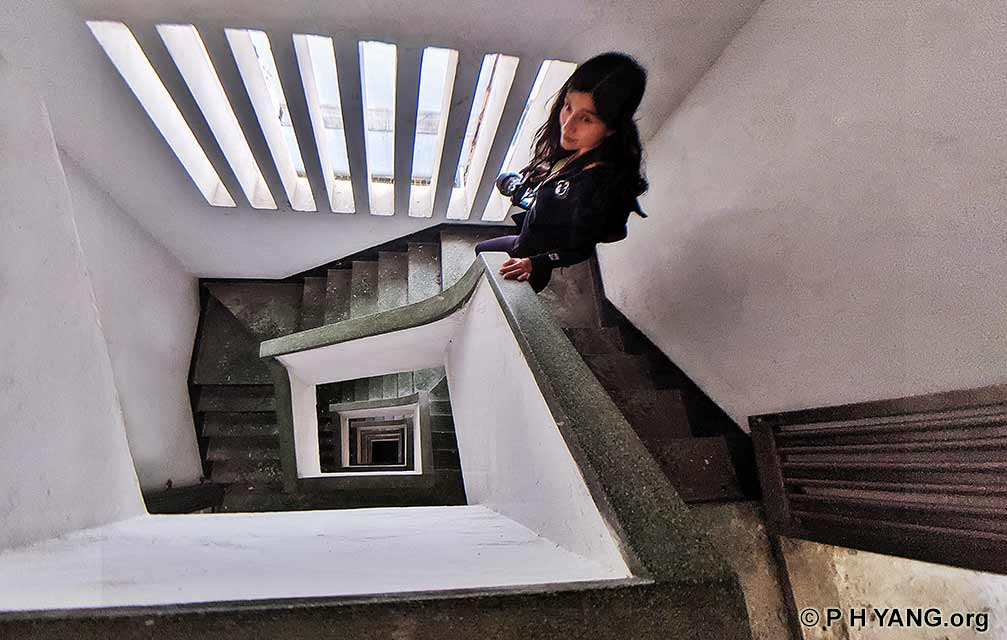 Pauline Explores Deserted Tenement with Terrazzo Staircase Pauline, who loves hiking, photography and urban exploration, ventures into a deserted Tong Lau (Chinese tenement house) with an elegant terrazzo staircase. The tenement was built in 1955 and is located on a quiet private street. It covers an area of about 7,970 square feet and has only 6 floors (basement, ground floor, 1st to 4th floors). There are 54 units in total, each with a unit area of 855 sq ft to 1,130 sq ft. Endowed with a broad staircase, high ceiling and large windows, it has the style of an old mansion. Garbage piled up in some units and in the staircase, while the concrete on the ceiling is exposed. Urban exploration is based on the principles of take nothing except picture, leave no trace and not revealing the location. Hong Kong | 2021 31 Aug 2021 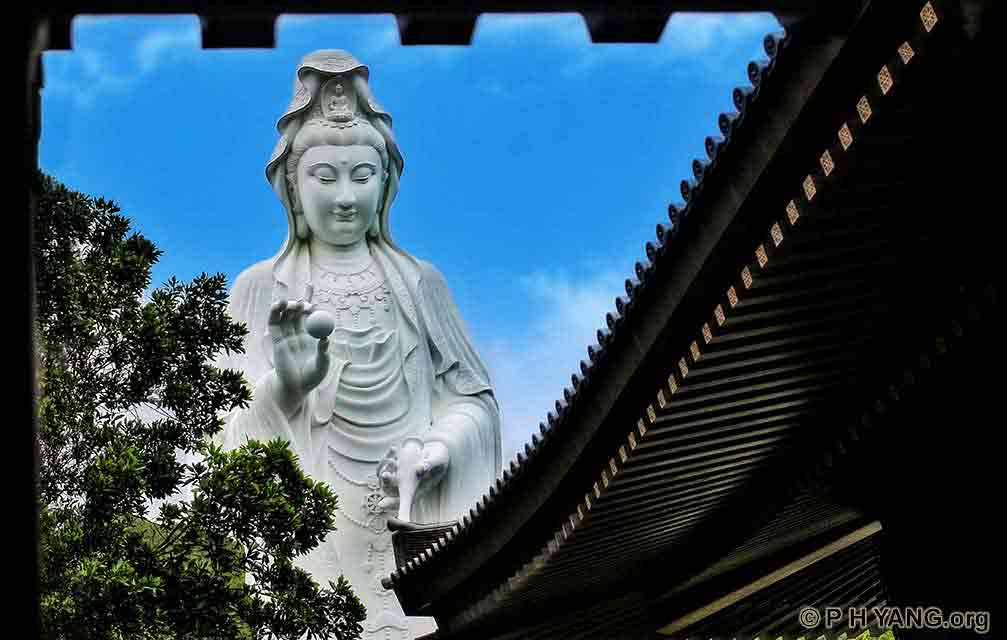 Tang Dynasty-style Tsz Shan Monastery Tsz Shan Monastery is a large Buddhist temple located in Tung Tsz, Tai Po District. It consists of grand Tang-style buildings nestled against the quiet environment of the Pat Sin Range overlooking the Plover Cove Reservoir. It covers an area of about 500,000 square feet. It was constructed by the Li Ka-shing Foundation and took over 10 years. As of 2019, Mr Li Ka-shing has contributed over HK$3 billion to cover the development costs and operating expenses. The core of Tsz Shan Temple include: A 76-metre-high (equivalent to about 25 storeys) outdoor bronze and alloy Ruyilun Guanyin statue in white, the second tallest in the world. The statue holds a water vase in her left hand and a cintamani gem in her right hand. An 18-metre-high Main Buddha Hall covers an area of about 1,027 square metres: it enshrines the Buddha Shakyamuni, the Medicine Buddha and the Amitabha, with a golden lotus canopy on top of the Buddha. A Guanyin Hall covering an area of about 333 square metres. It was officially opened to the public in April 2015. Tai Po . Hong Kong | 2021 30 Aug 2021 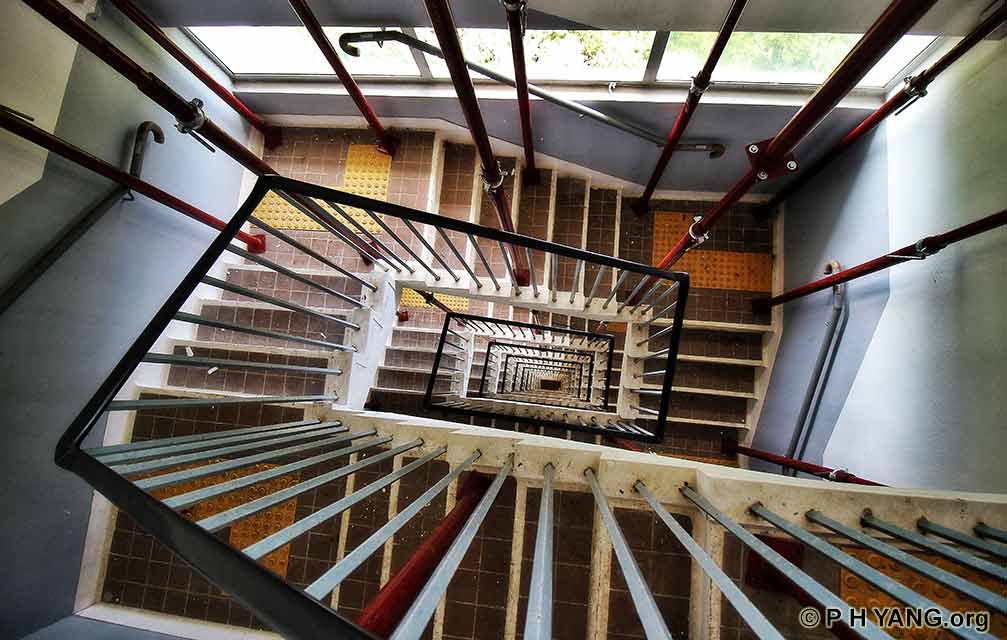 Exploring Deserted Quarters for Senior Civil Servants An avid urban explorer ventures into a deserted large-scale quarters for senior civil servants. The quarters were built in 1965 and is located at the Peak, overlooking the south with seaviews. It covers an area of about 130,000 sq ft. There are 6 blocks with over 10 floors, 148 units, each with 3 bedrooms of 2,034-2,734 sq ft. In February, Wharf and the consortium it led won the bid with a sky-high price of $7.25 billion. The price is $50,010 per sq ft, setting the record for the most expensive land auction price per square foot in Hong Kong. Urban exploration is based on the principles of take nothing except picture, leave no trace and not revealing the location. Hong Kong | 2021 29 Aug 2021 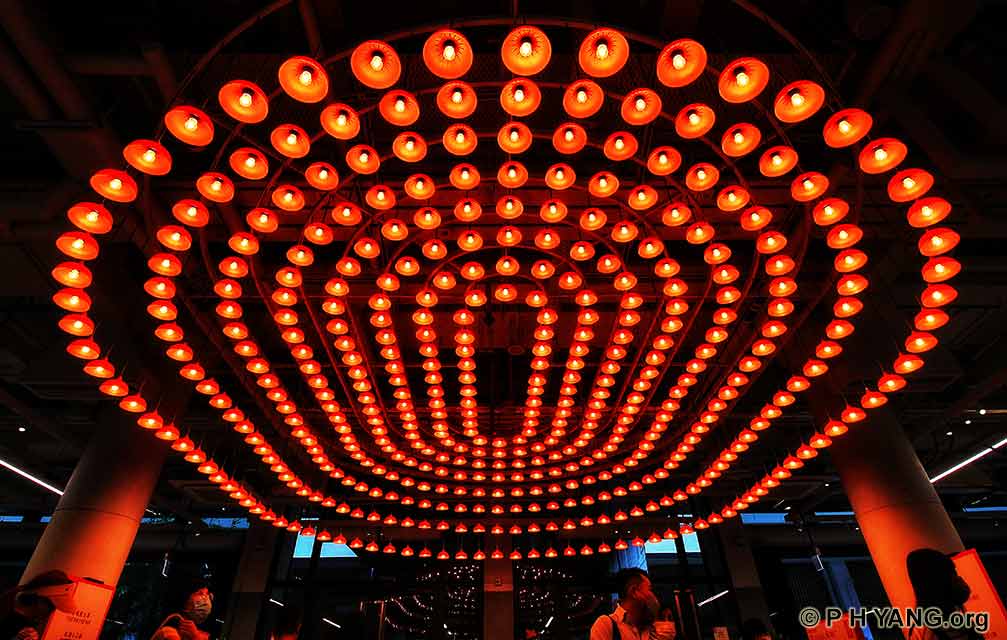 Central Market Revitalised 18 Years Late Central Market, which had been vacant for 18 years since 2003, soft opened on August 23 after being revitalised. The project has experienced 3 Chief Executives, 5 Secretaries for Development (including Carrie Lam who was in charge of the project), 3 chairmen of Urban Renewal Authority (URA) and 4 chief executives of the project, reflecting the bureaucratic nature of urban development in Hong Kong. The entire project took over 12 years from planning to implementation, and the project cost increased from just $500 million to several times overrun, excluding the opportunity cost. This Grade III historical building now comes in simple white and wood tone design. Central Market was completed in 1939, and has been deserted from 2003 to 2017, when URA took it over for revitalisation. It reopened after a lapse of 18 years, retaining the classic terrazzo main staircase and 13 market stalls, adding a lot of creative elements such as a series of local brand cultural and creative shops, art work by local illustrators, plus the Instagram-worthy stairs. The photo shows the red lamps on the ceiling after the revitalisation of the Central Market. Central . Hong Kong | 2021 28 Aug 2021 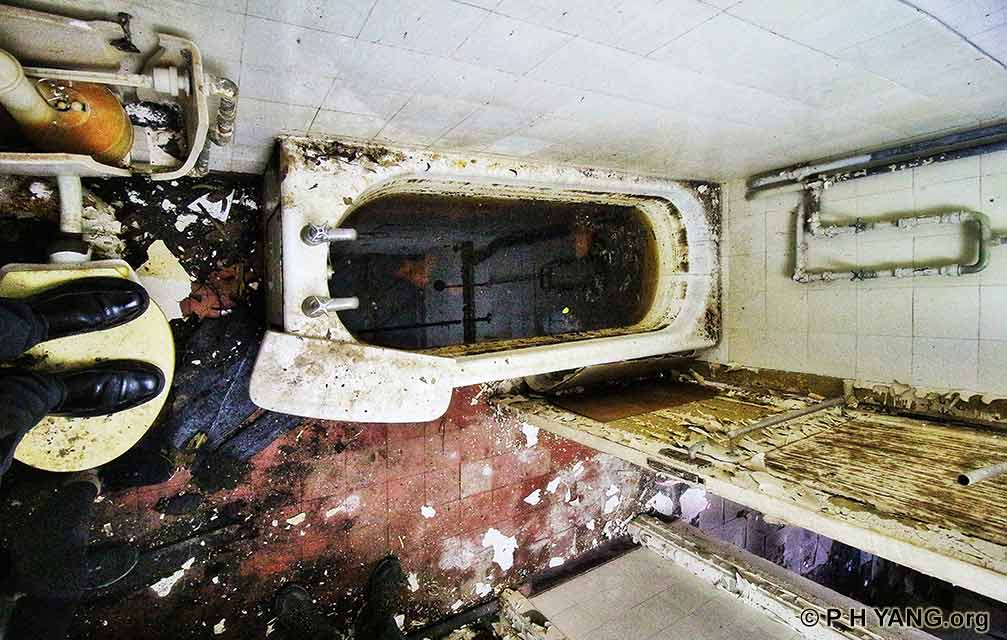 Exploring Deserted Large-scale Barracks An avid urban explorer ventures into a large-scale deserted barracks compound. These barracks were built around 1898 and were occupied by the British Army in Hong Kong. After 1997, they were the largest of 3 remaining barracks. They were occupied by the People's Liberation Army (PLA) in Hong Kong, including special battalions, transport companies, and logistics departments. The PLA has a strength of 6,000 to 12,000 in Hong Kong, and their total military land occupies 2,700 hectares, which is more than the total land use for private residences in Hong Kong. Many of them are low in utilization, even vacant for a long time, and not actually used for military purposes. Urban exploration is based on the principles of take nothing except picture, leave no trace and not revealing the location. Hong Kong | 2021 27 Aug 2021 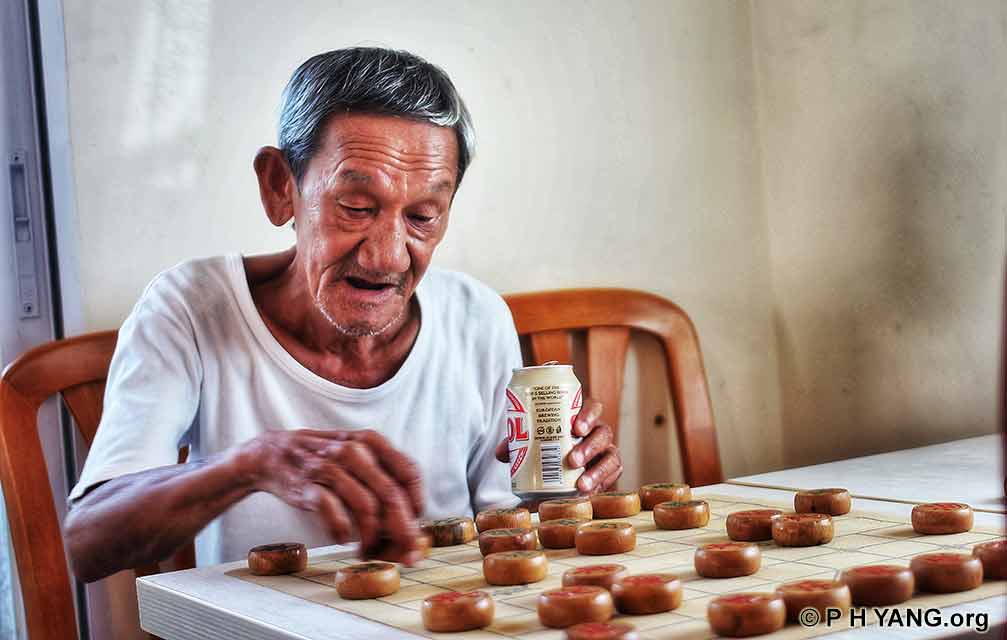 Uncle Tsang Love to Play Chinese Chess 67-year-old Uncle Tsang, from Ting Kok in Tai Po, enjoying a game of Chinese Chess and a beer with his friend after lunch. Tai Po . Hong Kong | 2021 26 Aug 2021 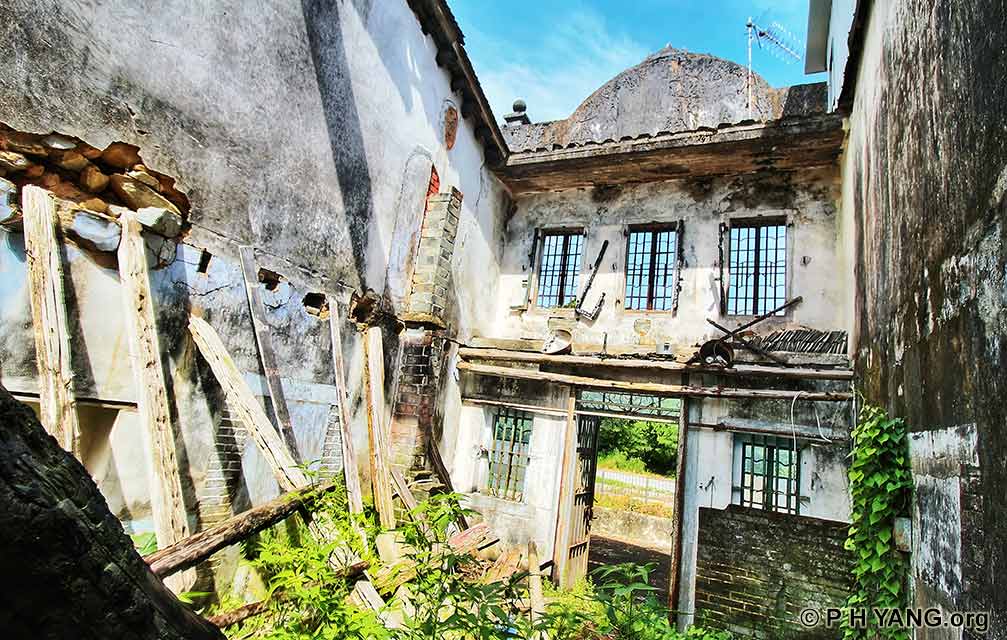 Exploring Deserted Chinese-Western Mansion An avid urban explorer ventures into a deserted Chinese-Western-style mansion. The mansion was built in 1936. The 2-storey high Chinese-Western-style building is divided into 3 houses. Now, only the leftmost house is inhabited. The roofs and floors of the middle and right houses have collapsed, leaving only the front facade. The semicircular gable on the roof is engraved with the 3-character name of the mansion and the year of construction 1936. In 2011, it was listed as a Grade III historic building. Urban exploration is based on the principles of take nothing except picture, leave no trace and not revealing the location. Hong Kong | 2021 25 Aug 2021 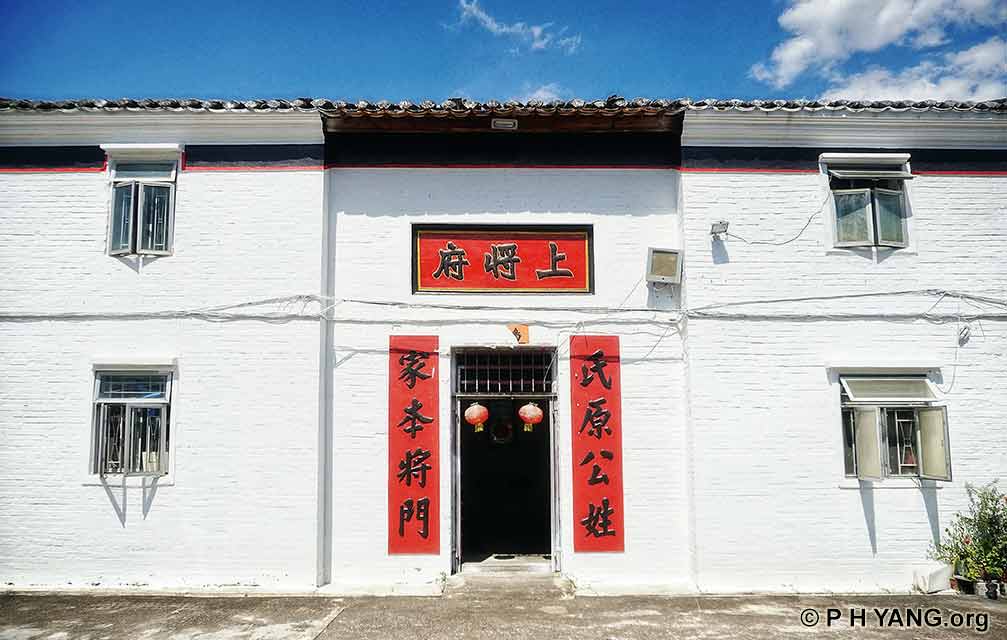 Historic General's Mansion The General's Mansion (Sheung Cheung Fu), located in Fung Kat Heung, Kam Tin, Yuen Long, was built by the warlord Shum Hung-ying in the early Republic of China. Shum Hung-ying had participated in the revolution to overthrow the Manchu of Ching Dynasty, but he also became a warlord in Guangxi many times. In 1925, Shum was defeated by Li Chung-yan in Guilin, and then fled to Hong Kong. The Shum clan finally settled in Kam Tin, established Fung Kat Heung (Village), and built the "General's Mansion" there. The main building is in the middle of the General's Mansion, while the left and right sides are the Shum Clan Ancestral Hall and the Hip Wai House. The gate is entitled "Chun Nam Hall" (Hall that make the South tremble). Kam Tin . Hong Kong | 2021 24 Aug 2021  Exploring Deserted Temple in the Hills An avid urban explorer ventures into a deserted temple in the hills. The temple has 2 buildings, and the metal arch with the temple name at the entrance has fallen down. There are stone steps towards the front of the main building, with an red iron gate bearing the temple name on the brow and couplets on either side. The temple enshrines Samantabhadra, Guan Yin (Goddess of Mercy), Kwan Kung, etc. There is a simple altar inside. The temple has been abandoned for a long time, the exterior is covered with trees and vines, while the access path is obscured. Urban exploration is based on the principles of take nothing except picture, leave no trace and not revealing the location. Hong Kong | 2021 23 Aug 2021 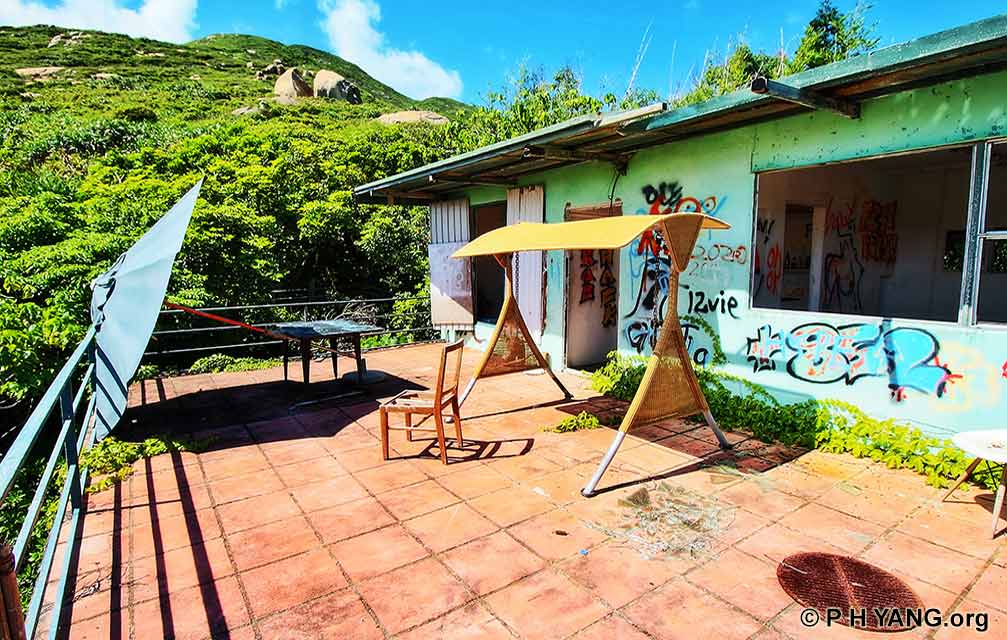 Exploring Abandoned Seaview Villa An avid urban explorer ventures into an abandoned villa, perched on the hill with splendid seaview. The villa is 2-storeys high with an outdoor swimming pool. Spiral staircases provide access to the first floor. Personal belongings and furniture are scattered in the house, and graffiti is on most walls, inside and out. This house has been abandoned for a while. Access is only via a footpath, a short hike from the main road. Urban exploration is based on the principles of take nothing except picture, leave no trace and not revealing the location. Hong Kong | 2021 22 Aug 2021 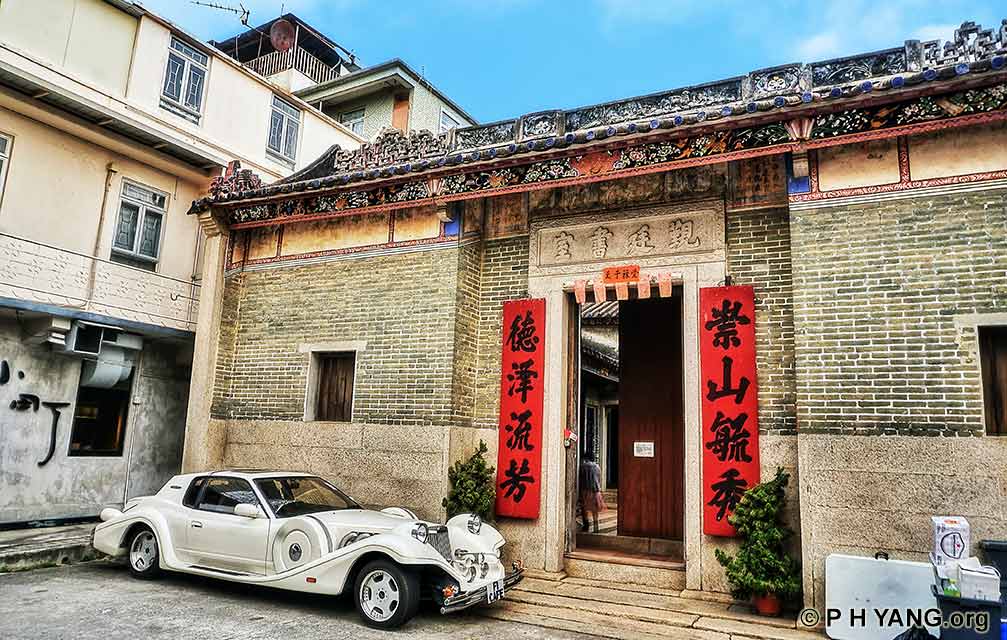 Old and New in Yuen Long A Classic Motor Carriages (CMC) Tiffany, circa 1980s, is parked outside Kun Ting Study Hall, built in 1870 by the Tang clan in Ping Shan, Yuen Long. Yuen Long . Hong Kong | 2021 21 Aug 2021 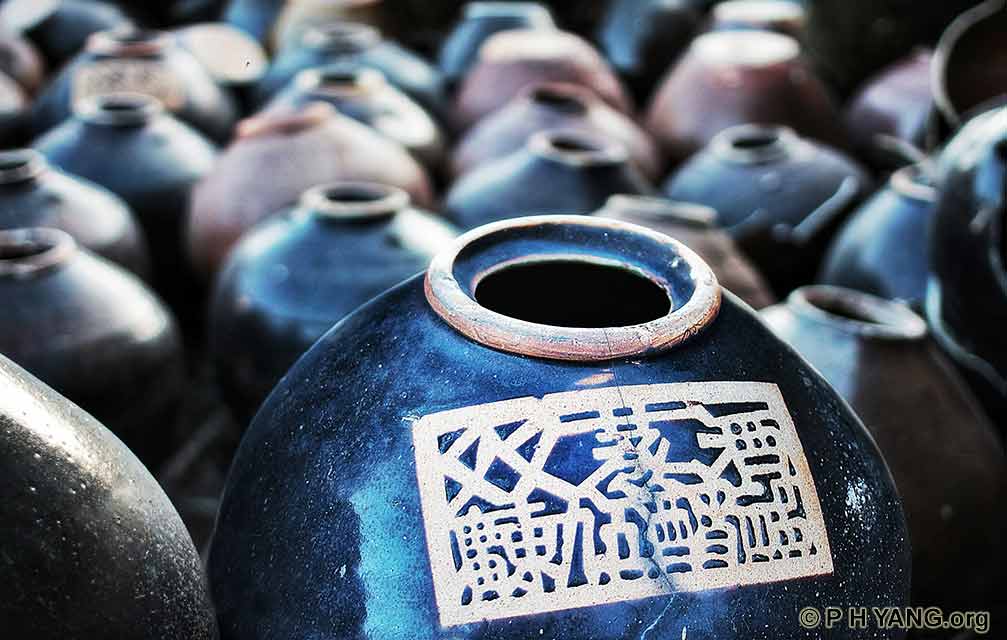 Exploring Deserted Wine Factory An urban explorer ventures into an deserted wine and vinegar factory. The factory is a 2-storey building, and is the oldest rice winery in Hong Kong. The factory’s cluttered workshop filled with dilapidated brewery pottery radiates a dark and terrifying atmosphere. It was once used as a shooting location for disaster and thriller movies. Urban exploration is based on the principles of take nothing except picture, leave no trace and not revealing the location. Hong Kong | 2021 20 Aug 2021 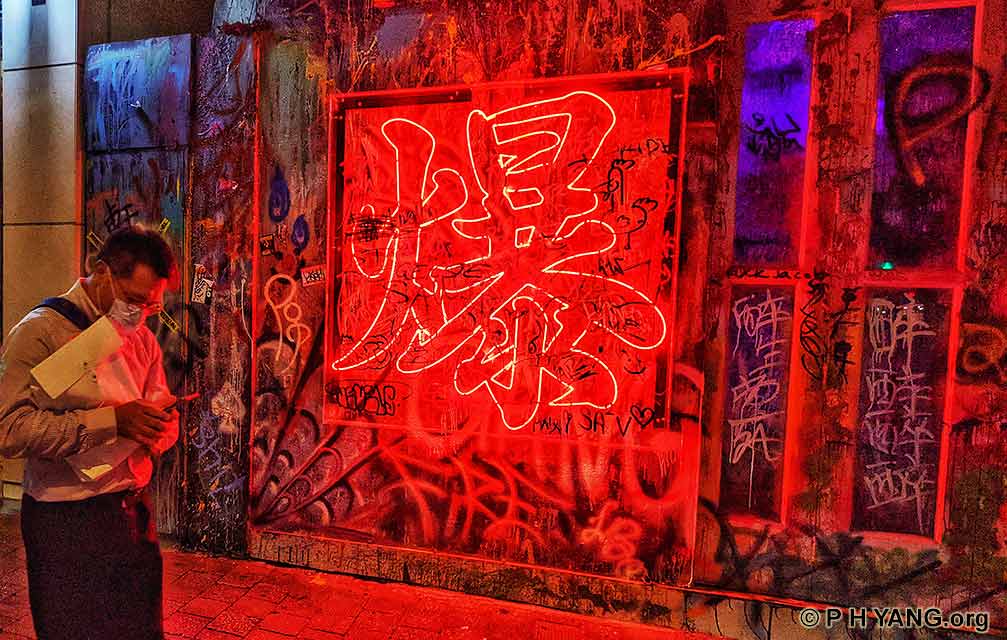 Darling, I'm Coming Home Now! A man walks past a bar in Wanchai with neon sign while making a call on his mobile phone. Wanchai . Hong Kong | 2021 19 Aug 2021 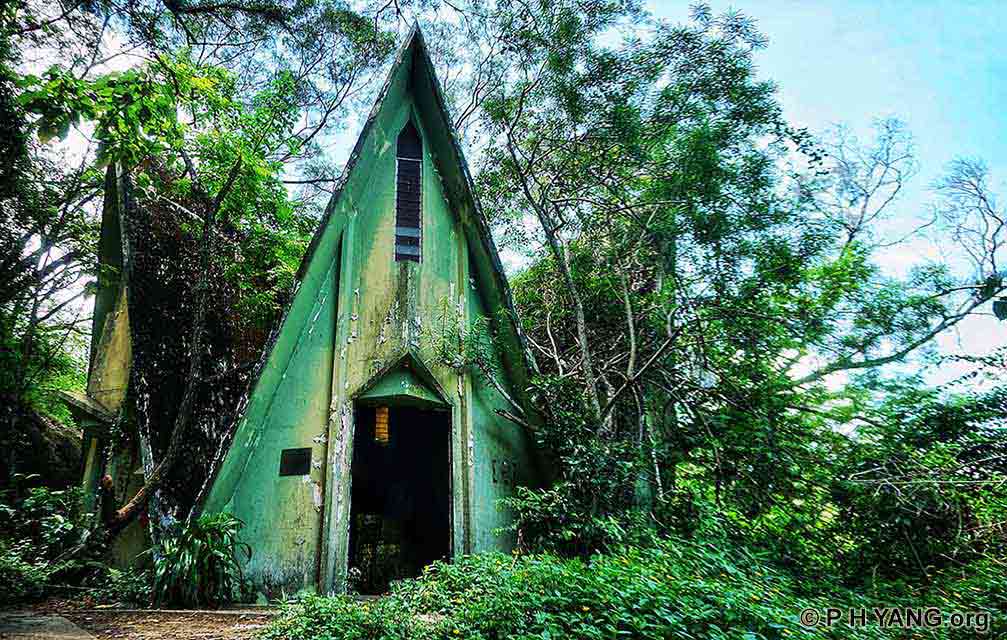 Mysterious Abandoned Lotus-shaped Hindu Temple The abandoned Hindu Temple was completed in the 1960s and was built by Nepalese Gurkhas soldiers stationed at the camp to worship Shiva, the Hindu god of destruction. After 1996, the Gurkhas left, and the Hindu temple was abandoned. In 2010, it was rated as a Grade III historical building. The temple is a gray-greenish hexagonal building with six spires on top, which is crown-shaped, symbolising a lotus flower that is regarded as a beautiful and sacred in Hinduism. It is the only lotus-shaped building in Hong Kong, rare and unique. The building is covered with moss and there is no decoration left in the temple. Each of the 6 sides has a portal, except the southeast side, with a small yellow window above the door. The interior of the building is painted red and green, and the atmosphere is full of mystery. Urban exploration is based on the principles of take nothing except picture, leave no trace and not revealing the location. Hong Kong | 2021 18 Aug 2021 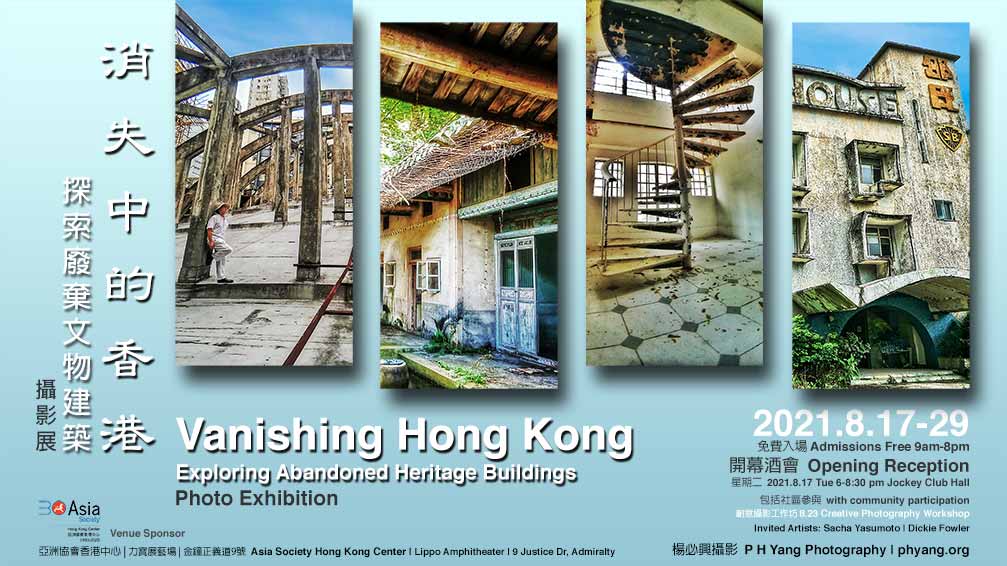 Vanishing Hong Kong - P H Yang Opens Photo Exhibition at Asia Society Vanishing Hong Kong – Exploring Abandoned Heritage Buildings: P H Yang opens Photo Exhibition at Asia Society Hong Kong Center on August 17-29, 2021. In more ways than one, Hong Kong as we know it is vanishing. From grand Hakka mansions, century-old European villas to the iconic Shaw Studios, the heart of the Hollywood of the Far East, gorgeous heritage buildings in Hong Kong are being bulldozed and redeveloped into more shopping malls and high-rise luxury apartments, as we speak. Urban explorers are racing against the clock to document and preserve the collective memory of the city’s vanishing heritage before these historic buildings are lost forever. Hong Kong holds the spot as the priciest property market in the world, and is well known for its shortage of land. The list of heritage buildings that have fallen to the wrecking ball or to be "revitalised" beyond recognition grows ever longer. In Vanishing Hong Kong, discover exquisite images of Hong Kong’s heritage buildings, many of them behind locked doors and gates or high razor-wired fences, out of reach to most people, captured by award-winning photographer and Hong Kong native P H Yang. The exhibition showcases over 100 photos of Hong Kong’s rarely seen abandoned and deserted heritage buildings, many of which are Grade I historic buildings. Over 20 photos from 2 invited artists/photographers, Sacha Yasumoto and Dickie Fowler, are also included. In addition, with participation from the urban exploration community, 43 photos were selected for the photo exhibition by 4 distinguished judges from more than 120 submitted photos. Vanishing Hong Kong aims to raise awareness of the disappearing historical buildings and heritage in Hong Kong as well as the role of urban explorers in documenting and conservation. Opening Reception Jockey Club Hall, ASHK August 17 Tuesday 6-8:30 pm Asia Society Hong Kong Center 9 Justice Drive, Admiralty, Hong Kong August 17 - 29, 2021, 9 am - 8 pm Daily Free admission Admiralty . Hong Kong | 2021 17 Aug 2021 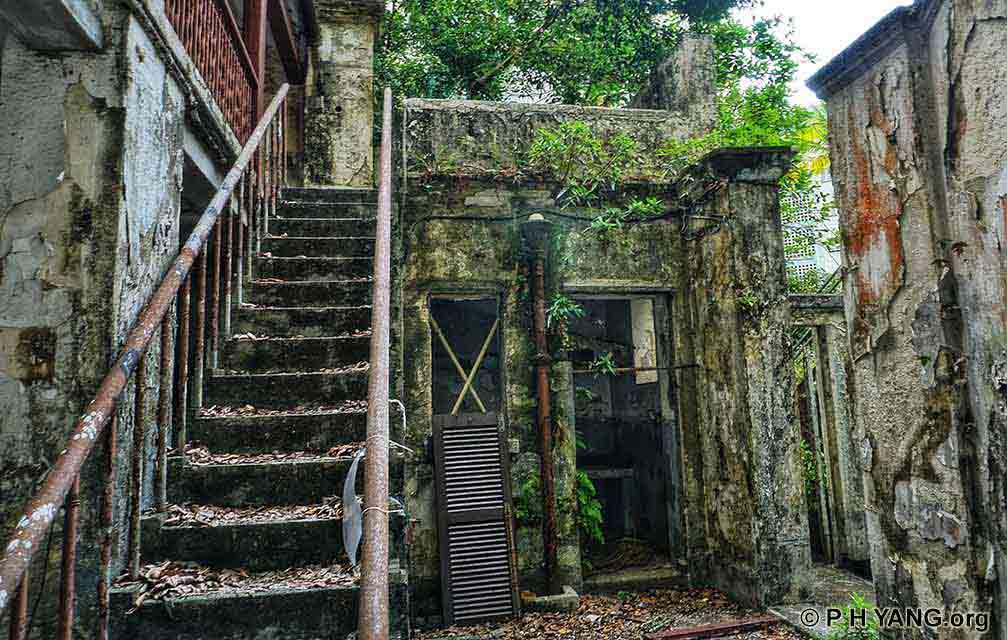 Exploring Deserted Century-old Gatekeeper Lodge An avid urban explorer ventures into an abandoned century-old Chinese-Western style gatekeeper's lodge at Mid-levels. The lodge was probably built in 1901/1902 with the main house. The building is a 2-storey Chinese tiled pitched-roof structure including a verandah with iron railings, expressed rainwater pipes and a chimney stack to serve the kitchen. The entrance way is built of a grand flight of granite steps. Many of the original doors and louvered timber shutters still remain. The use of Chinese tiles for the pitched roof supported on timber frame is a local adaptation. It has been abandoned since around 2000. Now trees and roots sprawl densely on the wall surfaces. It is a Grade II historic building. Urban exploration is based on the principles of take nothing except picture, leave no trace and not revealing the location. Hong Kong | 2021 16 Aug 2021 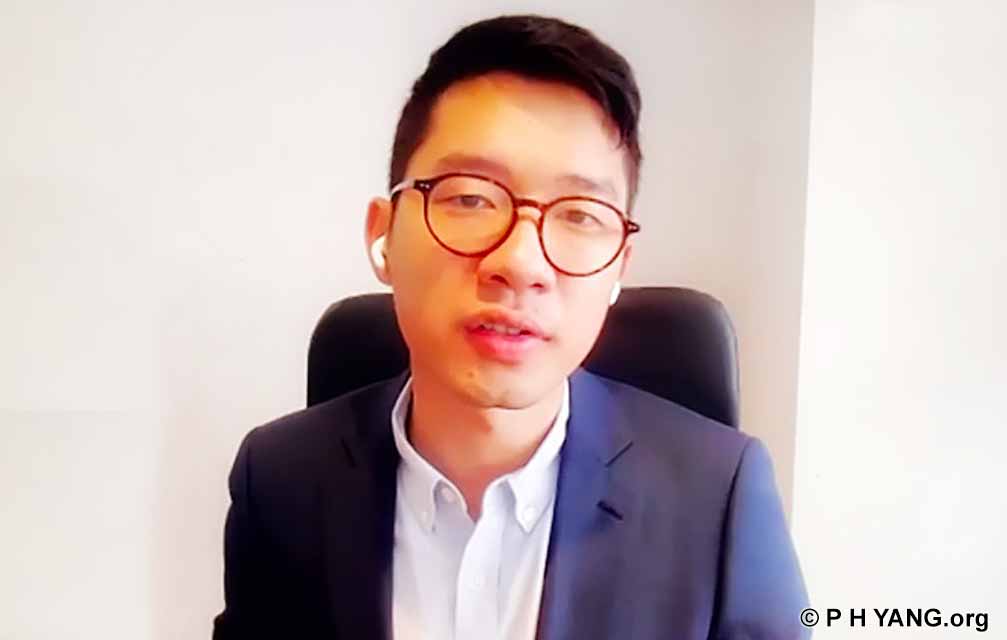 Nathan Law et al Awarded Arno-Esch Prize 2020 for Democracy The Arno-Esch Prize 2020 is awarded this year to the Hong Kong student Nathan Law and his colleagues. The jury of the Arno-Esch Prize honours the courageous commitment of the students around Nathan Law and his colleagues in the fight for freedom, human rights and democracy against the Chinese Communist Party (CCP). The press statement reads: In recent years, the CCP has not only violated Hong Kong's international legal status, it has also gradually reduced or suspended its existing civil rights and liberties, including the democratic legal system. In the meantime, a number of students, but also many other citizens who have so far bravely stood up for the preservation of democracy and the rule of law in Hong Kong, are in custody. With the award, the jury is following the statement made by Arno Esch, who gave the award its name and a former student from Rostock: 'A liberal Chinese is closer to me than a German communist.' A well-deserved recognition with international significance. The jury's decision to award the Arno-Esch Prize to Nathan Law and his colleagues is justified by the chairman, Prof. Dr. Günther Heydemann, with two points: 'On the one hand, it is about showing the fighters for democracy, the rule of law, human and civil rights in Hong Kong that they are not alone and that their commitment deserves recognition in every respect. On the other hand, it should be pointed out again that in Hong Kong there is an almost symbolic conflict between the values of democracy and the unvalues of a dictatorship, practiced by the CCP, which is of great international importance. The CCP is currently in the process of imposing its dictatorial regime on Hong Kong in order to eradicate freedom and democracy there.' The President of the Association of Liberal Academics (VLA), Alexander Bagus, adds: 'Up until his execution, Arno Esch not only campaigned for freedom, human rights and democracy, he also tried to protect his friends and colleagues. He took on responsibility at a young age and did not want to bring harm to others. We recognize all of this in Joshua Wong and his colleagues. Wong and his friends were and are aware that their resistance can have dire, personal consequences. Nevertheless, they were not intimidated and continued on their way. You are more than worthy of receiving the Arno-Esch Prize.' The award ceremony took place on Saturday, August 14, 2021 at 1 pm at the Hilton Bonn, Germany, in cooperation with the Friedrich Naumann Foundation for Freedom. (Screen-cap of video conference on award presentation) Bonn . Germany | 2021 15 Aug 2021  Exploring Deserted Catholic School An avid urban explorer ventures into a deserted Catholic school. The school was founded in 1958 and moved into this building in 1968. It has been deserted since 2011 after moving to a campus and became a playground for graffiti artists. A chapel is located on the top floor. Police claimed that they found explosive devices there in May 2021, sealed off the building and use it for drills occasionally. Urban exploration is based on the principles of take nothing except picture, leave no trace and not revealing the location. Hong Kong | 2021 14 Aug 2021 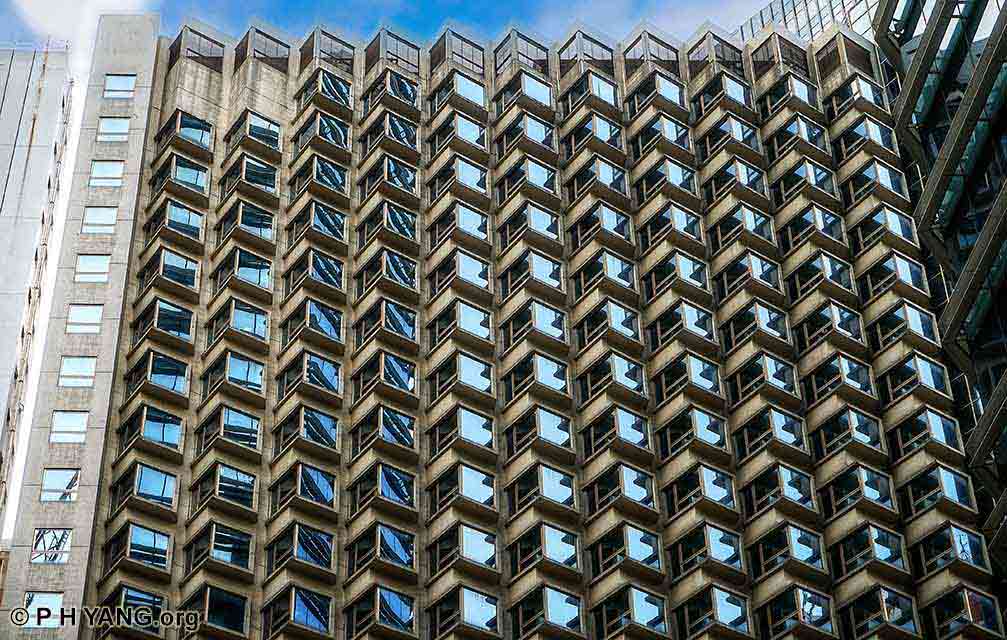 Geometric Facade of OZO Wesley Hotel OZO Wesley Hong Kong is a contemporary 4-star hotel in the bustling Wanchai district, a short walk from the Pacific Place mall and Wanchai MTR station. The hotel features sleek design elements and 251 chic rooms with window seats. Wanchai . Hong Kong | 2021 13 Aug 2021 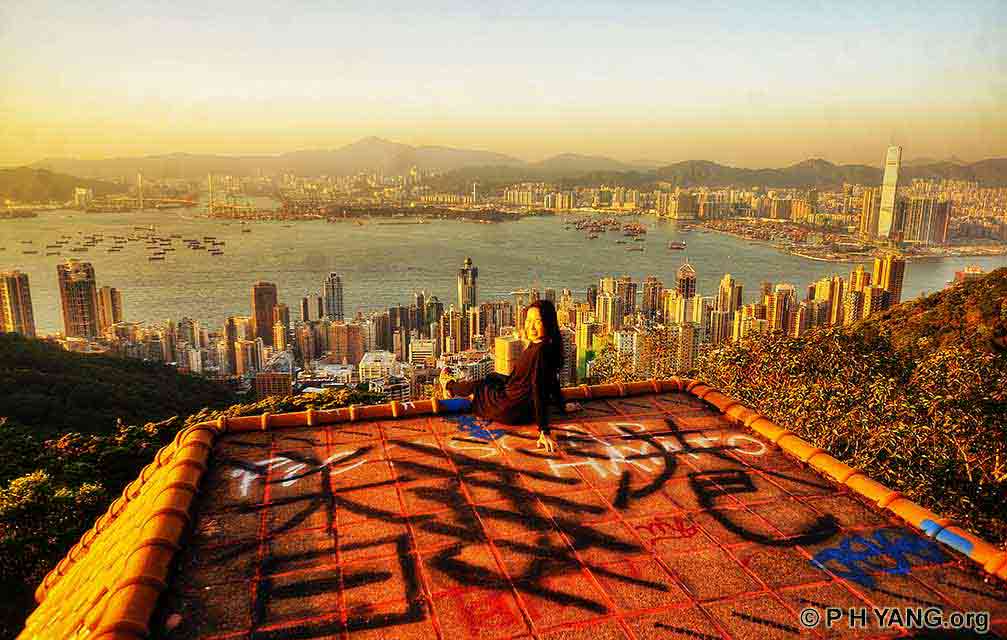 Amy Explored Most Haunted Deserted Upscale Villa Amy, a senior banker and avid urban explorer, ventured into Hong Kong’s most haunted deserted villa. This multi-storey mansion, a Grade I historic building, is located in the most upscale district on Hong Kong Island. Built in the 1920s, its exterior is the classic grey cinder block of the era. Perched on the hills, it enjoys panoramic views of Hong Kong and Victoria Harbour. Graffiti is found all over the building, inside and out. Access to the roof is no longer possible as the ladder is wrapped in razor-wire. It is said that the original owner went bankrupt and the second owner died in the house. It is rumoured that 7 Catholic nuns were decapitated here during the Japanese occupation and neighbours regularly complain about peculiar sounds. A woman who lived here in the 70s said she often saw a ‘ghost child’ with thick matted hair in a white lace nightgown and heard her crying. Urban exploration is based on the principles of take nothing except picture, leave no trace and not revealing the location. Hong Kong | 2018 12 Aug 2021  Century-old "High Street Haunted House" The facade of the Old Mental Hospital is one of the oldest surviving structures testifying the development of mental care services in Hong Kong. It is also affectionately known as the “High Street Haunted House”. Its style of monumental Early-Baroque architecture is rare in Hong Kong, particularly as it is so accurately constructed, using local materials. Completed in 1892, the Old Mental Hospital at No. 2 High Street was originally designed and constructed as the Medical Staff Quarters of the Government Civil Hospital. In 1939, the Building was converted into the wards for the mentally-ill female patients in order to relieve the overcrowding of the Mental Hospital in its vicinity. In 1961, it became an out-patient clinic for the mentally-ill after the opening of the Castle Peak Hospital in the same year, and was left vacant from 1971 until 1998. In 1998, works commenced to redevelop the site into Sai Ying Pun Community Complex, with the exceptional granite facade of the Building preserved intact. It served as the additional wards of the Mental Hospital from 1939 to 1961. The existing facade of the Old Mental Hospital is L-shaped in plan, and comprises a wide verandah along the long side facing High Street. The heavy Early-Baroque features, including wide arched verandah and lower level of rusticated granite blocks together create an appearance of strength and impregnability. The fine dressed ashlar mouldings, cornices, quoins and band courses provide an elegant contrast to the heavy rusticated granite blocks. Further graceful effects are achieved by the use of pediments, pinnacles, decorative parapets and ornamental wrought-ironwork balustrading to the verandahs. It was declared a monument in 2015. Sai Ying Pun . Hong Kong | 2021 11 Aug 2021 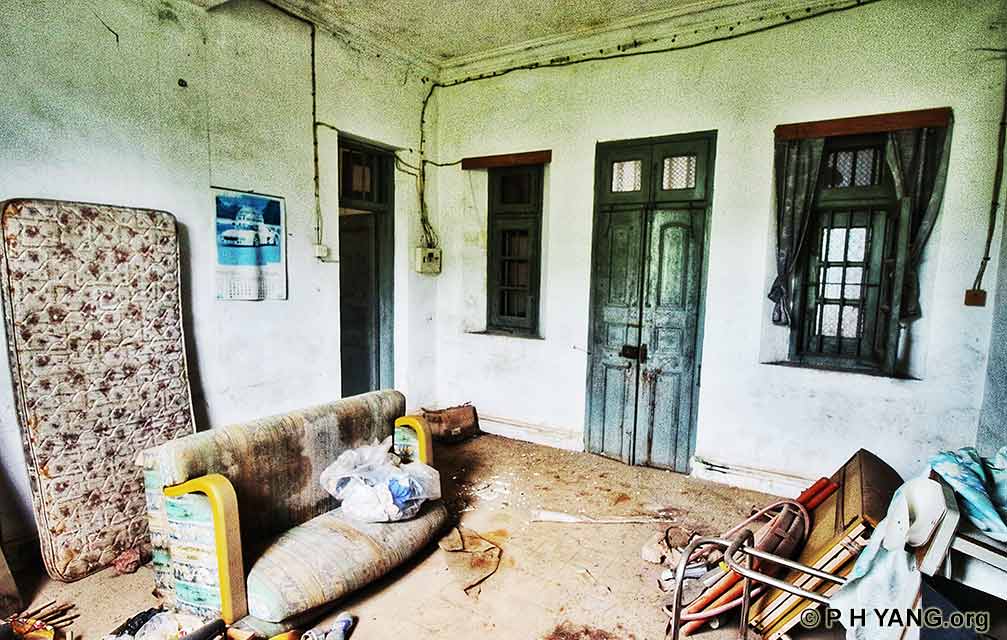 Exploring Near-Century-old Deserted Mansion An avid urban explorer ventures into a near-Century-old mansion that has been deserted partially. The mansion was built in 1932. The building is 2 storeys high and designed in Western style, with mountain and flowers carved and low walls on the upper facade. It has a long depth with a courtyard in the middle. One of the houses has been deserted for some time. Furniture and personal belongings scattered around in the house. Urban exploration is based on the principles of take nothing except picture, leave no trace and not revealing the location. Hong Kong | 2021 10 Aug 2021  Distinctive Rooftop of Wanchai Office Building The distinctive triangular structure at the rooftop of an 37-storey prime office building in Wanchai stands out. It was built in 1998. Wanchai . Hong Kong | 2021 9 Aug 2021 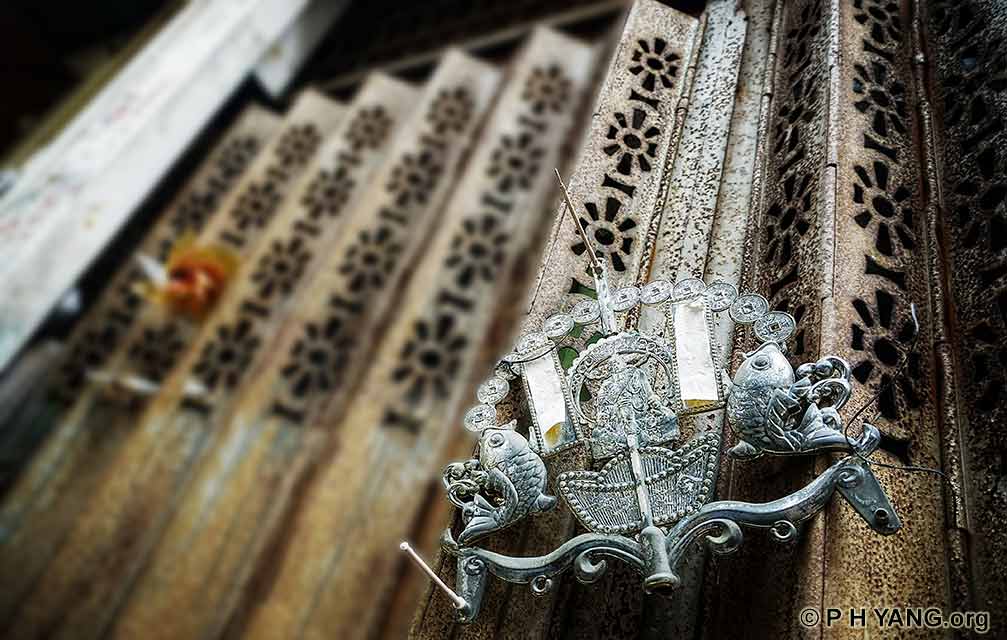 Exploring Deserted Chinese Tenement An avid urban explorer ventures into a deserted Tong Lau (Chinese tenement building). The building was completed in 1965. It has 5 storeys of 2 units each with a nett area of 211 sq ft. A few flight of stairs lead up to the entrance and a tree has integrated with the building. It has been deserted for a while with furniture and personal items scattered throughout the building. Urban exploration is based on the principles of take nothing except picture, leave no trace and not revealing the location. Hong Kong | 2021 8 Aug 2021  Exquisite Floor Tiles and Terrazzo Handrails of Tai Hang Tenement Tai Hang, located between Causeway Bay and Tin Hau, is a quiet and self-contained community with many Tong Lau (Chinese tenement) and specialty restaurants. A tenement building from the 1960s has exquisite floor tiles and terrazzo handrails. Tai Hang . Hong Kong | 2021 7 Aug 2021 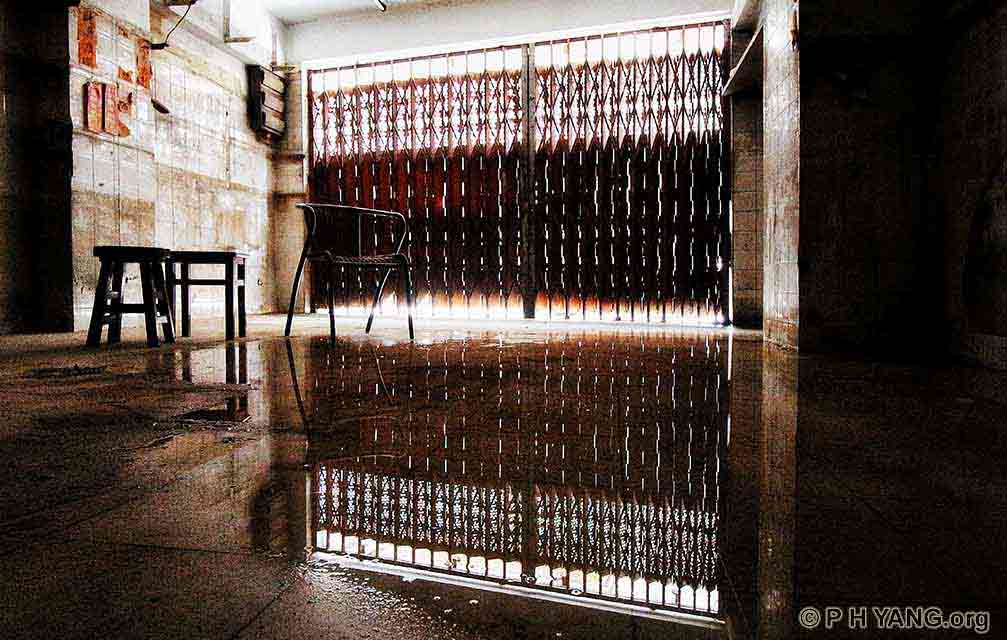 Exploring Deserted Chinese Sauce Shophouse An avid urban explorer ventures into a deserted Chinese Sauce Shophouse. The 5-storey building was completed in 1969. The shophouse occupied the first 2 storeys. A traditional folding gate is at the entrance. An internal staircase provides access to the first floor. It has been deserted for a while. Some furniture and other items are scattered throughout the shop. Urban exploration is based on the principles of take nothing except picture, leave no trace and not revealing the location. Hong Kong | 2021 6 Aug 2021 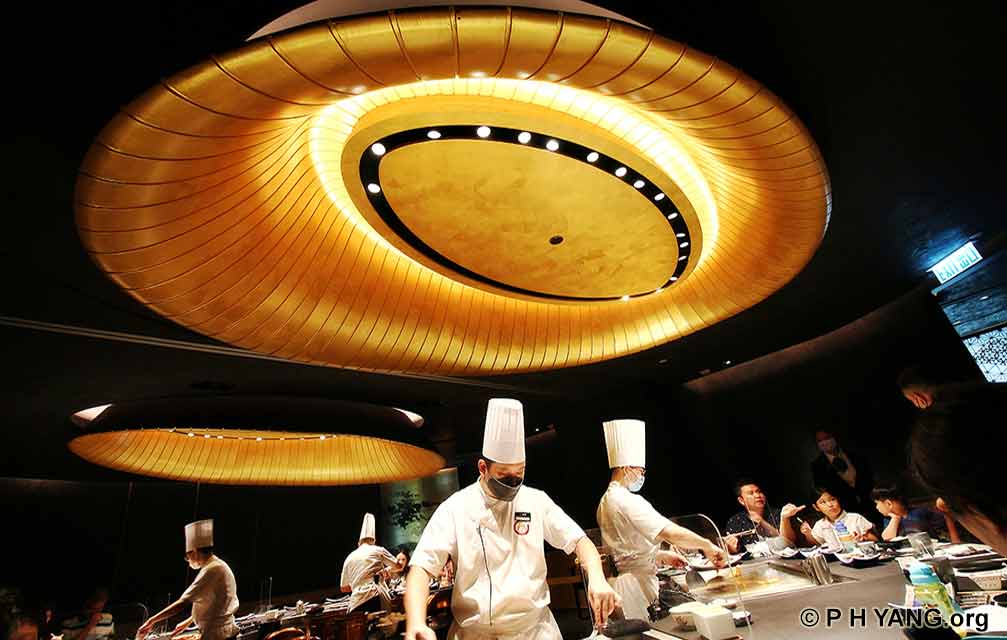 Teppanyaki Chef at Work Teppanyaki is a post–World War II style of Japanese cuisine that uses an iron plate to cook food. The word teppanyaki is derived from teppan, the metal plate on which it is cooked on, and yaki, which means grilled or pan-fried. A form of dining that allows guests to appreciate the chef's cooking skills while eating. Causeway Bay . Hong Kong | 2021 5 Aug 2021 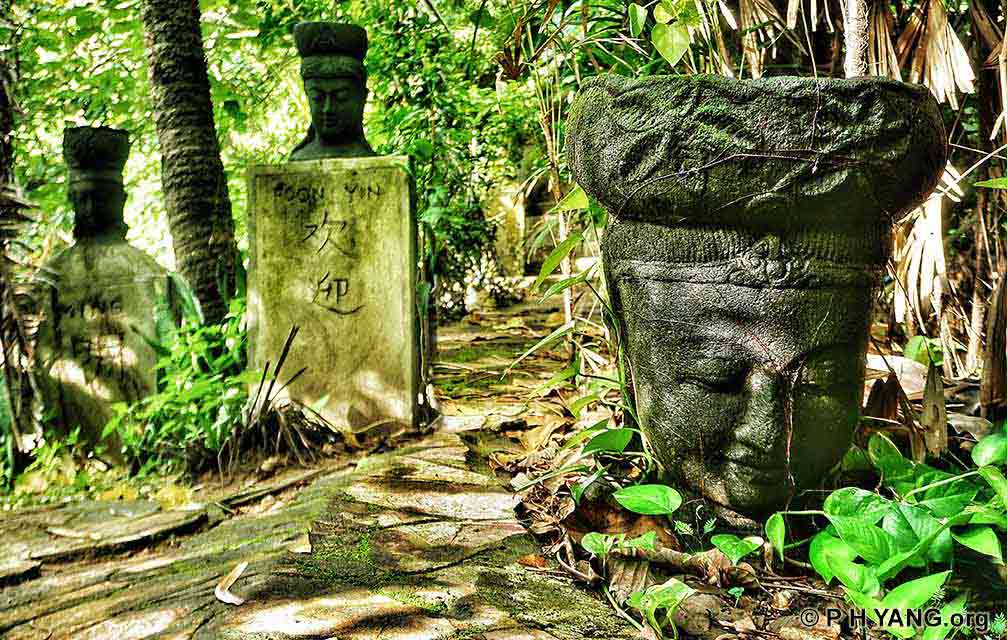 Exploring Deserted Seaview Villa An avid urban explorer ventures into a deserted seaview villa. The villa is 2 storeys high with an eclectic and unique design. A number of Buddha heads are placed in the front garden. The balcony on the first floor has sweeping seaviews. A terrace and an outdoor swimming pool is outside the living room. Personal items and furniture are scattered throughout the building. This house has been deserted for a while with trees and vines growing wildly outside. Urban exploration is based on the principles of take nothing except picture, leave no trace and not revealing the location. Hong Kong | 2021 4 Aug 2021 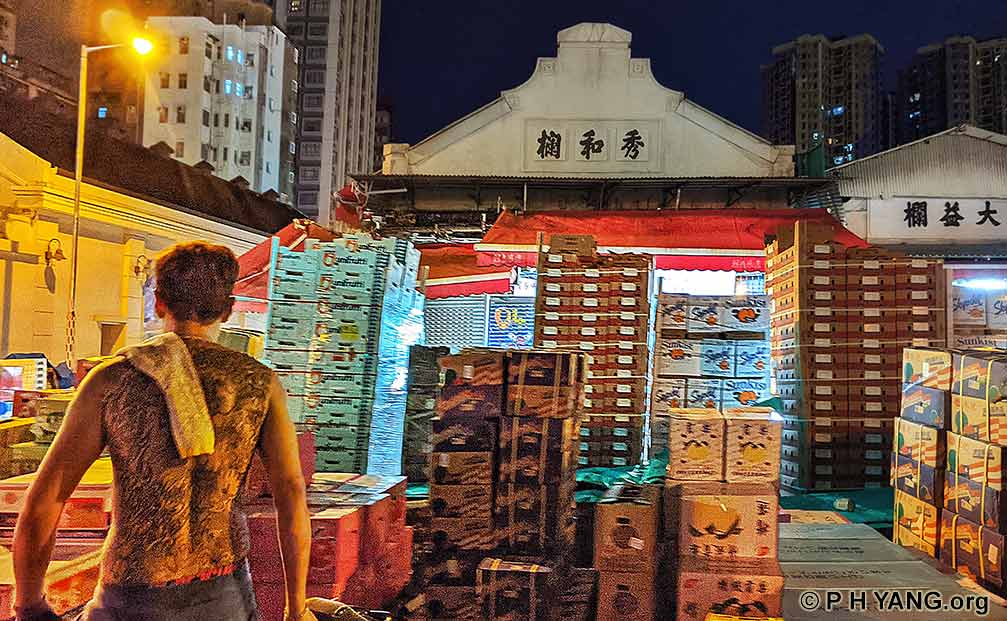 Tattooed Man Working at Century-old Yaumatei Fruit Market At 3:12 am, a tattooed man was working at Yaumatei Fruit Market, named a Grade II historic building in 2009. Built in 1913, the wholesale market consists of a rectangular site packed with market stalls and shophouses, 1 and 2 storeys high. It is buzzing with activities between 3 to 6 am. The most distinctive feature of the Market is the unusual use of Dutch Colonial gables and pediments, carved with the traders’ brand names. Yaumatei . Hong Kong | 2021 3 Aug 2021 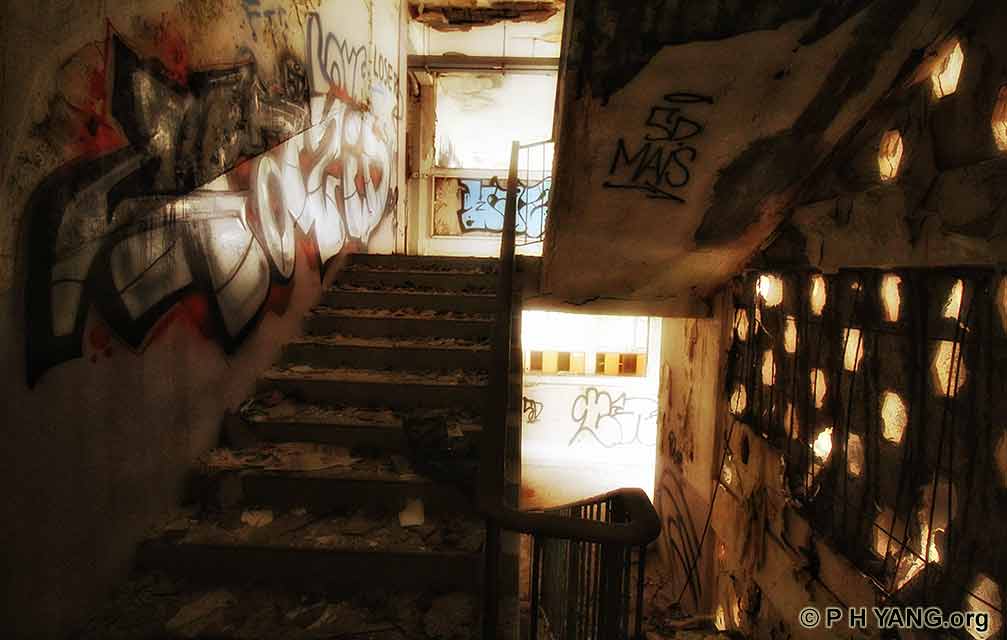 Exploring Deserted Public Primary School An avid urban explorer ventures into a deserted primary school. This public English primary school started operation in 1962. The school occupies an area of 2,000 sq m and has a 3-storey building. There are 12 classrooms, equipped with playground, auditorium, art and craft room, music room, etc. In its heyday, it had 24 classes in the morning and afternoon, with more than 40 students each. In 1986, it changed to a full-day class mode. Due to insufficient enrollment, the school was closed in 2008, and the school became vacant. Debris are scattered throughout the school and graffiti is everywhere. Urban exploration is based on the principles of take nothing except picture, leave no trace and not revealing the location. Hong Kong | 2021 2 Aug 2021 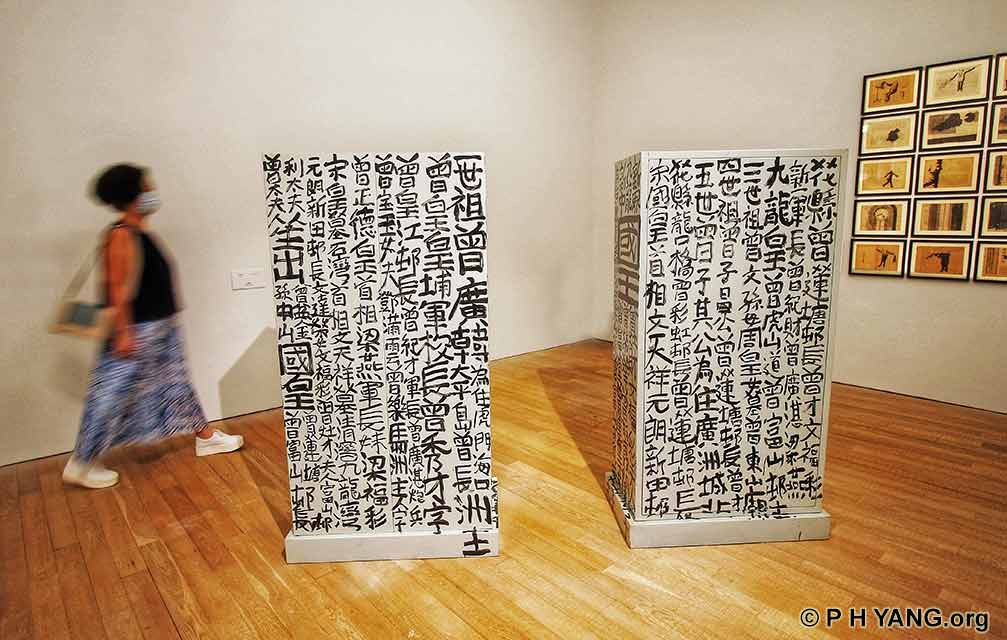 King of Kowloon's Art at Ink City Ink City, a thematic group exhibition at Tai Kwun, explore how ink art is used to address social issues among the Chinese diaspora through often contemporary and humorous ways, including gender, identity, desire, and fantasy. It showcases over 50 pieces of work by 19 contemporary artists, offering a refreshing take on the art form radically different from the traditional Chinese ink paintings. Self-proclaimed as “King of Kowloon”, Tsang Tsou-choi spent years covering electrical utility boxes around Hong Kong with wild graffiti-like calligraphy. For decades since the 1950s, to the frustration of the authorities, these writings appeared all over the city on public surfaces and were viewed as a visual symbol of Hong Kong. What is most defining in these works by Tsang is that his activities did not take place in officially recognised art venues nor were they intended to be seen as artwork. JC Contemporary | April 23 to August 1 | Free SOHO . Hong Kong | 2021 1 Aug 2021 Archive: Jul Jun May Apr Mar Feb Jan 2021 Dec Nov Oct Sep Aug Jul Jun May Apr Mar Feb Jan 2020 Dec Nov Oct Sep Aug Jul Jun May Apr Mar Feb Jan 2019 Dec Nov Oct Sep Aug Jul Jun May Apr Mar Feb Jan 2018 Dec Nov Oct Sep Aug Jul Jun May Apr Mar Feb Jan 2017 Dec Nov Oct Sep Aug Jul Jun May Apr Mar Feb Jan 2016 Dec Nov Oct Sep Aug Jul Jun May Apr Mar Feb Jan 2015 Dec Nov Oct Sep Aug Jul Jun May Apr Mar Feb 2014 |
(C) p h yang 2021 - all rights reserved |